
From one week to the next, Reviews from R’lyeh writes reviews of new games and supplements with an emphasis on
Call of Cthulhu and other games of Lovecraftian investigative horror. This series concentrates on Call of Cthulhu and other games of Lovecraftian investigative horror, but not those recently released, but those of the past. There have been innumerable titles published over the years and this is an opportunity to appraise them anew, often decades after they were first released.
Having looked at the releases from Games Workshop, culminating with
Green and Pleasant Land: The British 1920s-30s Cthulhu Source Pack, Reviews from R’lyeh now moves on to another early licensee for Chaosium, Inc. This is T.O.M.E. or Theatre of the Mind Enterprises, a publisher best known for the titles it released for use with
Call of Cthulhu and
Gardasiyal: Adventures in Tékumel, the 1990s roleplaying game set in the world of
Tékumel: Empire of the Petal Throne. Between 1983 and 1984, T.O.M.E. would publish five collections of scenarios—
The Arkham Evil,
Death In Dunwich,
Pursuit To Kadath,
Whispers From The Abyss And Other Tales, and
Glozel Est Authentique!—for use with
Call of Cthulhu, Second Edition. It is the third of these titles,
Pursuit to Kadath, which is the subject of this review.
Pursuit to Kadath consists of two separate scenarios. The longer of the two is the titular ‘Pursuit to Kadath’, whilst the bonus, much shorter scenario is ‘The All-Seeing Eye of the Alskali’, which can be run after ‘Pursuit to Kadath’. From the outset, the title itself suggests the Dreamlands and H.P. Lovecraft’s
The Dream-Quest of Unknown Kadath, if not the city located either north or below, the plateau of Leng. However,
Pursuit to Kadath has nothing do with Kadath, the title here referring to a fictional location in Turkey. The use of the title then, is symptomatic of many of the early campaigns and anthologies for
Call of Cthulhu, which would include Lovecraftian references in their titles, but not make use of them in their actual content. That said, apart from
Horror on the Orient Express, the two scenarios found in the pages of
Pursuit to Kadath are some of the very few to be actually set in Turkey. Title issues aside, the very good news is that
Pursuit to Kadath is very much a huge improvement over the first two titles from the publisher. Both
The Arkham Evil and
Death in Dunwich have deservedly poor reputations because essentially, they are early attempts at writing scenarios for
Call of Cthulhu, which simply do not work. Or at least, require a great deal of effort to make work and even then, not necessarily work to the greatest of effects. In comparison,
Pursuit to Kadath is a huge improvement because it has a plot which makes sense. It is far from a perfect plot, but it makes sense. It also has an intriguing beginning and it also comes with a lot of historical background and information. However, like its forebears,
Pursuit to Kadath is not without its issues.
Set in 1923,
Pursuit to Kadath casts the Investigators as students at Miskatonic University, who are also members of The Sunday Group, a prestigious social club. They may be rich enough to be members, but if not, they may have been sponsored for membership on academic merit. The scenario opens with the Investigators in the library when Darryl Stewart, a fellow member, shows then a weird photograph which has appeared on the front page of a newspaper. The caption on the photograph reads, “FLYING ARM!” and purports to show a bloodied arm which seems to have been brutally ripped from the shoulder of a policeman who subsequently died and is now floating the air. Several witnesses, including the photographer, have sworn that this is what they saw, but both Darryl and the Investigators can see another figure in the photograph and instead the arm floating in the air, it is firmly in the grasp of this figure, a figure which looks awfully like Nils Lindstrom, fellow student and Sunday Club member, and son of a Chicago senator. Further, in the photograph, Lindstrom is holding a bag used by 1st National Bank to transport money and there is a separate report of a bank robbery on the front page. So did the normally shy, mild-mannered Lindstrom rob the bank and if so why? And what drove him to commit such an act of sheer bloody violence? And why can the Investigators see him in the photograph and not others?
In addition, as fellow members of the Sunday Club, the Investigators have attended the same social events as Lindstrom, including a party at which they will recall strange events took place. Many of the attendees, including Lindstrom and the Player Characters, were hypnotised, and Lindstrom had a strange reaction. This was followed by a seance. Could this account for his now apparently even stranger behaviour? As they look into his strange behaviour and track his activities, the Investigators will find themselves following his trail from Boston to New York, where he seems to be inveigling himself into local high society and perhaps courting a young lady his family regards as a suitable match. Mundane help comes in the form of Lindstrom’s father who also wants to know what his son is doing, whilst Mythos help—or at least advice—comes from a strange dream with the Serpent Man who previously appeared in
The Arkham Evil. Ultimately, Lindstrom does not tarry in New York for long, setting sail across the Atlantic towards the Belgian Congo with the Investigators on his tail. The Investigators are expected to follow, but towards the end of the crossing, the captain of Lindstrom’s vessel urgently broadcasts a message warning that he has been forced to divert to Turkey.
When the Investigators reach Turkey, they encounter one of the great set pieces in ‘Pursuit to Kadath’. This is the fishing port of Selefko, located on Turkey’s southern coast, Lindstrom’s vessel beached and broken on the shore, the town seemingly abandoned, but with the sound of the call to prayer emanating from the town’s mosque. The only inhabitant is Ahmed Mohammed Mohammed, a mighty, Anglophobic, scimitar- and musket-wielding warrior, who has been sent to deal with the devils who came ashore in Selefko and began preying upon the town’s inhabitants. He will brook no interference from the Investigators, but potentially, could become an ally, if only temporarily, in tracking down the source of the threat which befell Selefko. Ultimately, the Investigators will climb up Alacadaq Mountain on Lindstrom’s trail and descend into the mountain to face him before he can bring about final plans.
At its heart, ‘Pursuit to Kadath’ is a chase scenario. The Investigators start the scenario on Lindstrom’s trail and follow it all the way to Turkey, only catching up with the oddly behaving student in the scenario’s final scene inside Alacadaq Mountain. And what a richly detailed trail it is! Strange behaviour, a bank robbery, missing memories, bloody murder after bloody murder, an odd artefact, a diplomatic incident, and a vampire showdown on the streets of Selefko! Which makes for a very heavily plotted scenario. In fact,
Pursuit to Kadath is not only a very heavily plotted scenario, but a scenario which is heavily plotted twice—and heavily pre-plotted at that!
The issue is that the first half of the scenario is devoted to explaining both plot and background, along with any necessary stats, and so is much of the second half—though to a lesser extent. Further, a fair degree of the beginning investigation is done as a flashback, which involves a fair degree of exposition. What the Keeper is meant to do is follow the plot in the second half, but draw heavily from the first, but what it does instead, is effectively double the effort required to run
Pursuit to Kadath. Especially in its preparation.
The heavy double-plotting of ‘Pursuit to Kadath’ is not the scenario’s only problem. The second is getting the Player Characters involved. There are no hooks except, ‘a fellow member of the society you belong to, is acting oddly, so why not for the good of the society, investigate?’ Which is essentially asking the Investigators to investigate because there is a plot there. Later on in the scenario though, NPCs contact the Investigators directly to ask them to continue their enquiries, at which point they have much more motivation.
Third, in terms of plotting, the scenario’s denouement is severely underwritten with no explanation as to exactly what the Investigators are expected to do to thwart Lindstrom’s plans. A strange artefact would also appear to play a role in the scenario, but no proper explanation of what that role is given, certainly as far as the denouement is concerned. At best, it would appear that the Investigators are expected to rush in, all guns blazing, which feels more Pulp action than Lovecraftian.
The fourth problem is the poor handling of the Mythos in ‘Pursuit to Kadath’. The primary entity involved is Yig and his servants, a set of eleven Dragon Warriors that the Father of Serpents created to fight the other gods. Lindstrom has been possessed by one of these Dragon Warriors—who also appear on the artefact—and cuts a bloody trail from Boston to New York and then onto Turkey in an attempt to prepare himself to summon his master in an underground temple. With the benefit of hindsight and numerous scenarios for
Call of Cthulhu and other roleplaying games of Lovecraftian investigative horror, this does not feel like any depiction of Yig and his servants seen anywhere else. Even at the time of the publication of
Pursuit to Kadath though, it was noted how much the depiction of the Mythos and its entities differed from that seen in the source fiction and in
Call of Cthulhu itself. Elsewhere the inclusion of a Serpent Man makes sense, but a scene involving both Ghouls and a Nightgaunt feels just too much, whilst the creation of vampires feels more Hammer horror than Lovecraftian.
That said, the scenario is very well supported. There is a quick guide to creating students at Miskatonic University, very basic, but years before 1995’s
Miskatonic University: The University Guidebook and 2005’s
Miskatonic University. This is accompanied by a list of the degree requirements for numerous academic courses at the university, which whilst interesting, is difficult to bring into play and looks wholly arcane to anyone who has not been to an American university. There is a good mix of handouts, some very plain, others made to look like period documents. Some of them though, like a local railway timetable feel superfluous. In addition, there is a sensible guide to hypnotism and what was widely believed about it in the nineteen twenties, a guide to handling languages, and a guide to Turkey in the early nineteen twenties. Overall, lots of useful and interesting material.
Despite these faults, ‘Pursuit to Kadath’ is a big improvement upon the earlier
The Arkham Evil and
Death in Dunwich. The plot is almost coherent—twice, and the background material is solid and useful. It could be run today, but only with some effort. Not because it is necessarily bad, but because the two plots need to be deconstructed and put back together as ‘a’ plot to provide some much-needed clarity. The Keeper might also want to rework the elements of Mythos, again to add clarity, and then perhaps decide what to do about the vampires. One option would be to push the Pulp elements of the scenario, perhaps enough to use it with
Pulp Cthulhu: Two-fisted Action and Adventure Against the Mythos. It would require no little effort upon the part of the Keeper, and it is debatable whether that effort is worth it, but ‘Pursuit to Kadath’ is probably the first scenario from T.O.M.E. which has the potential to be worth it.
The bonus scenario in
Pursuit to Kadath is ‘The All-Seeing Eye of the Alskali’ by E.S. Erkes. Much shorter than ‘Pursuit to Kadath’, it is again set in 1923 and where ‘Pursuit to Kadath’ ends in Turkey, ‘The All-Seeing Eye of the Alskali’ begins in Turkey. Thus, it could be run as a sequel to ‘Pursuit to Kadath’. The Investigators are hired by Ghazi Mustapha Kemal, the leader of Turkey—he would only add Ataturk to his name in 1934–to locate a missing British archaeologist, Quentin Halward. Halward is an expert on Troy and the Turkish government fears that word of his disappearance will cause it undue embarrassment. Halward was last seen in the company of two Russians. This should push the Investigators to make enquiries amongst the Russian community in Istanbul, which quickly involves them in a web of intrigue between the White Russian emigres and the official and unofficial Soviet personal in the city, as well as a strange Islamic sect with a reputation for having worshipped demons. Ultimately, the Investigators’ enquiries should lead them from Troy to the Crimea and Halward’s whereabouts.
‘The All-Seeing Eye of the Alskali’ is shorter and more direct than ‘Pursuit to Kadath’. It is also very much better written and would be easy to run today, just as it would have been at the time of publication. Its use of the Mythos is better, if only because it is greatly reduced. Really all it does is add a new Mythos race, one which was the basis for the Cyclops legend. Unfortunately, ‘The All-Seeing Eye of the Alskali’ does end in a fight, which is not particularly interesting. However, all of the running around and intrigue in Istanbul with the Russians should be fun to roleplay.
Physically,
Pursuit to Kadath is decent enough, or decent enough for 1983. The cover is uninspiring, but the artwork inside—apart from the random skulls used to separate sections, is not too bad. Similarly, some of the handouts are not too bad either, and whilst the maps merely okay, they at least clearly depict what was intended. The use of period maps adds an element of verisimilitude, but are either too small or too dark to really make use of effectively.
—oOo—
Reviews of
Pursuit to Kadath at the time of its release, were surprisingly positive. Writing in
Fantasy Gamer Number 4 (Feb/Mar 1984), Warren Spector said, “
Pursuit to Kadath gets an almost-unqualified rave. TOME has offered so much background material, you don’t even have to play
Pursuit to Kadath to get your money’s worth – you can just incorporate all the background information into your own campaign. And they’ve even included a second – albeit brief – scenario in the back. You just can’t ask much more in an RPG module.”
However, when reviewing ‘Pursuit to Kadath’ in particular in
White Dwarf 54 (June 1984), Nic Grecas wrote that, “There is one other aspect of this scenario which caused me some disquiet — the background mythos which is presented in this scenario in respect of a certain deity (to say which one would, of course, spoil a rather large amount of the scenario’s mystery) seems to me to be at odds with Lovecraft’s own writings and also with some of the information in the main rules. Fortunately this forms a part of the background for the keeper only and with very little work can be reconciled with Lovecraft and Chaosium. This was a regrettable lapse on the part of TOME, but in a game system which was written as a ‘labour of love’ by a group of people who strove to recapture the atmosphere of brooding terror found in Lovecraft’s work, it is fortunate that these misconceptions do not intrude into the body of the scenario.” He concluded though, that “These points apart,
Pursuit to Kadath is a fine scenario which, if well managed, can produce and excellent ‘crescendo of terror’, but beware; the final scene could be a terminal experience for many of the investigators!”. He was equally as positive about ‘The All-Seeing Eye of the Alskali’ and of
Pursuit to Kadath in general that, “All in all, both scenarios are most creditable.” before awarding it eight out of ten.
Similarly, William A. Barton would highlight the differences between the Mythos of
Pursuit to Kadath and its portrayal elsewhere, when he reviewed all five of the
Call of Cthulhu titles from T.O.M.E. in
Space Gamer #71 (Nov/Dec 1984) with ‘Whispers of Things Lovecraftian: TOME’s Cthulhu Modules’. In providing an overview of the line published to date before reviewing, the fourth release from T.O.M.E., Whispers from the Abyss and Other Tales, he wrote, “TOME’s offerings are all intended for
CoC, though, in some instances, the Cthulhoid connection has been tenuous at the best. … This is a tendency for which TOME has received some criticism.” before continuing with, “
Pursuit to Kadath was TOME’s worst offender in this regard. While the main scenario and shorter bonus,
The All-Seeing Eye of the Alskali, did have more Cthulhian references than their predecessor — including Nyarlathotep, the Al-Azif, Yig, Father of Serpents, and a new Cthulhoid race, the Alskali (one-eyed giant cyclops) — the mix of non-Mythos occult materials were even more pronounced. Yig, in particular, was distorted beyond almost beyond recognition as far as any past references. The greatest criticism that can be leveled against this scenario, however, is its name: In the stories of Lovecraft and his imitators, Kadath was the mythical land of dreams — or a blasted plateau in the cold waste — as noted in
The Dream-Quest of Unknown Kadath. Yet in
Pursuit, the Kadath of the title is a town in Turkey, not the Lovecraftian Kadath at all. According to Rawlings,*TOME felt that a scenario set in the surreal Kadath of the Mythos would be too difficult to do right, so they opted for the more concrete setting of the “real” Kadath. The title was not an intentional deception.”
* Presumably Steve Rawling, who provided extra content for
Pursuit to Kadath.
Pursuit to Kadath was awarded three out of four stars by Steve List in
Different Worlds issue 38 (Jan/Feb 1985), who wrote, “In
Pursuit To Kadath, TOME has produced an excellent package of material for
Cthulhu players and added some interesting lore to the ‘things Man was not meant to know.’ It is well worth acquiring.”
—oOo—
It is surprising that
Pursuit to Kadath received so much praise at the time of its publication. Perhaps we have become spoiled by the quality of the content which is being written for
Call of Cthulhu, and has been written for
Call of Cthulhu over the years. Even so, better content was being written than
Pursuit to Kadath in 1983. Of the two scenarios in this volume, ‘The All-Seeing Eye of the Alskali’ is merely okay, but ‘Pursuit to Kadath’ is a double-stranded suety mess that is overly plotted, suffers from a Mythos mélange, and is underdeveloped where it counts. And yet,
Pursuit to Kadath is not irredeemably terrible, just not irredeemably bad enough that its potential can still be seen and that you wish it could have been better.
 Space Opera has always been one of those games that I have wanted for years but never tried. Anytime I thought about the game it was usually out of print and the prices were a bit high. Then I'd forget about it again. Reading through all my old Dragons, especially in the 1980-1983 time frame, there was an ad for it every issue.
Space Opera has always been one of those games that I have wanted for years but never tried. Anytime I thought about the game it was usually out of print and the prices were a bit high. Then I'd forget about it again. Reading through all my old Dragons, especially in the 1980-1983 time frame, there was an ad for it every issue.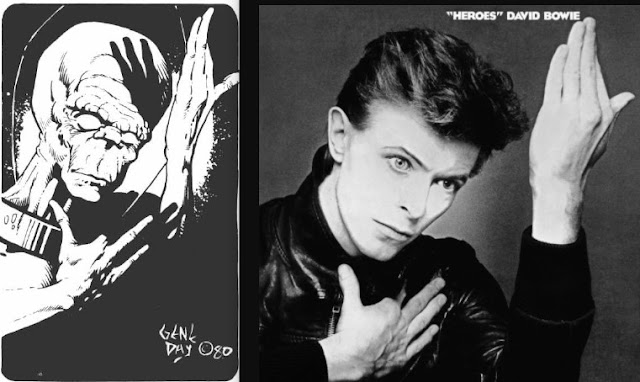

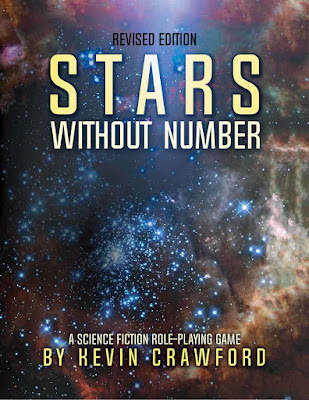
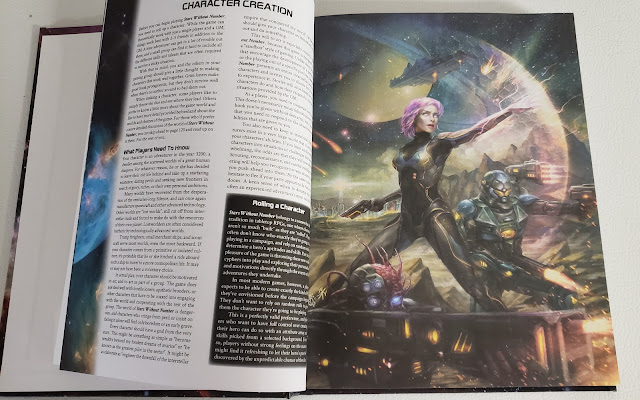


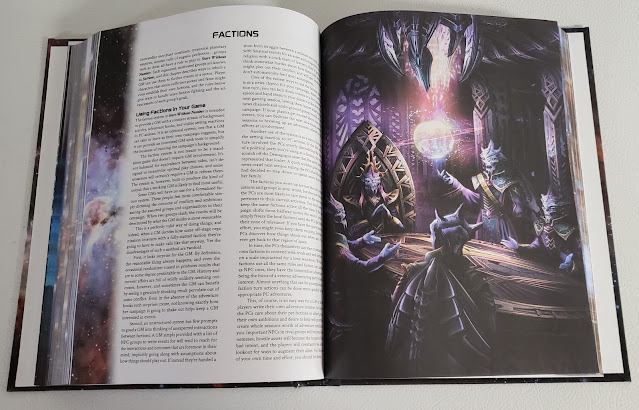
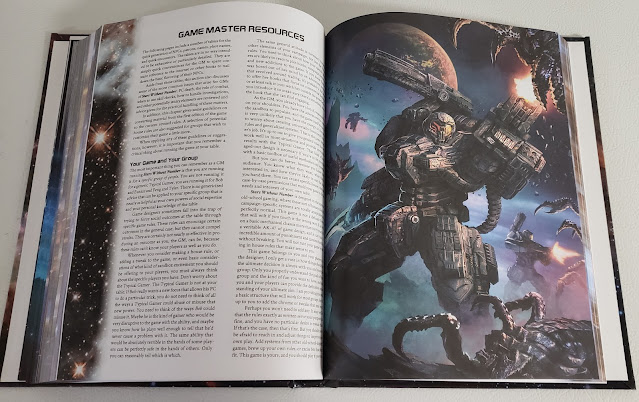

 US D&D Basic Set
US D&D Basic Set
 UK D&D Basic Set
UK D&D Basic Set
 US on top, UK on bottom
US on top, UK on bottom
 UK Basic Set contents
UK Basic Set contents
 Australian Basic Rulebook – no white
Australian Basic Rulebook – no white






















































